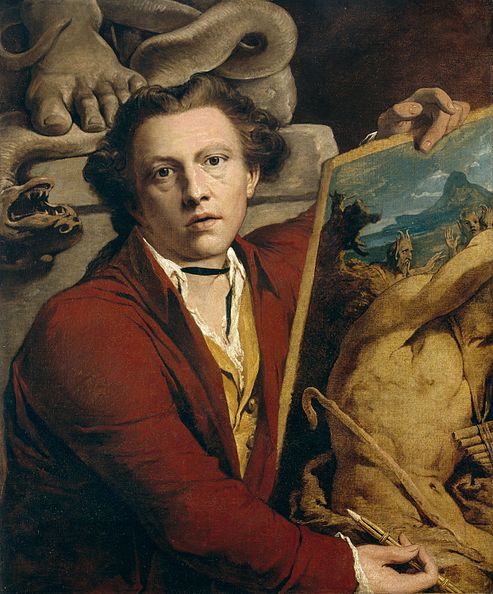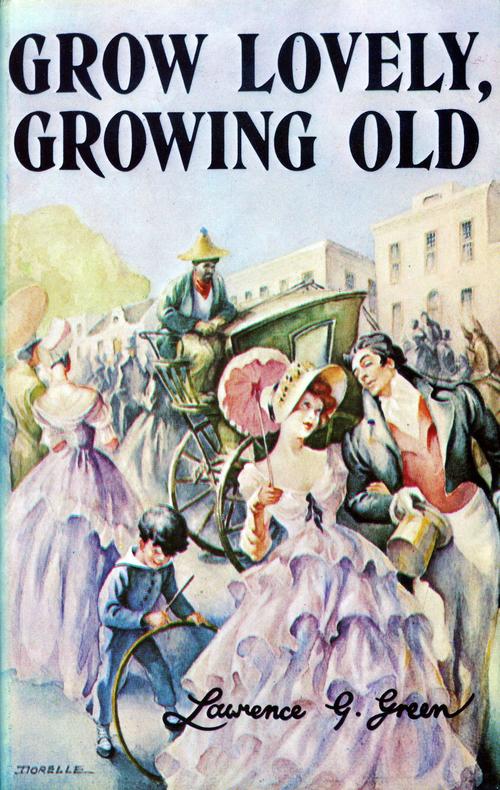
Dr James Barry graduated from the all-male Edinburgh College of Medicine in 1812. After qualifying, James Barry joined the British Army as a medical officer and was sent to South Africa a year later, where he gained a reputation as a first-class surgeon. It was at the Cape that Barry performed what is believed to be the first recorded, and successful, caesarean operation (1826). On 8 October 1828 Barry left the Cape for Mauritius. Barry died in 1865 in London whereupon it was found that the physician had been a woman.

" ... a woman had posed as a man to become the first female medical graduate in Britain, fooled the army into employing her and then kept her sex secret for half a century." - Nic Fleming, Science Correspondent, The Telegraph

How Margaret Bulkley became James Barry
In a highly readable and yet comprehensive article in the South African Medical Journal of January 2008, Dr Hercules Michael du Preez has written an account of how he believes the transformation of the young Irish girl Margaret Anne Bulkley into the accomplished male surgeon Dr James Barry was achieved.
Margaret was the daughter of Jeremiah and Mary Anne Bulkley. Mary Anne was the brother of James Barry (1741 - 1806), the Irish painter and Royal Academician.

Jeremiah and Mary Anne had three children, of whom Margaret was the middle on, born in 1789.
Due to financial misfortune, mostly related to their attempts to “marry up” their son John, the Bulkleys were forced to leave their home and in April 1804 Mary Anne dictated a letter to her brother James, the artist, whom she had not seen in 30 years. This letter, written for her by Margaret, told of the plight of the family, but was not a direct appeal for money.
The letter has a rather poignant postscript: “My mother is not able to write legible on account of a tremor in her hand, desired me to write for her.”
![[Cesarean+section+001.jpg]](https://blogger.googleusercontent.com/img/b/R29vZ2xl/AVvXsEg0sdUlaNvxxa6l_3Wbr3_H81DD8xinS1xequfqTEaSju7ZIrr_IsM6EYKWfc6AwTfp-uJr5K-3PRKpbXVALpIdwB56VLfAOY-LoIlVa6CEIwX-4iyRPgEoPAZlLELWaLG-kYENFWEDdenJ/s400/Cesarean+section+001.jpg)
About two months later Mary Anne and Margaret were in London where they saw the esteemed brother James. After some hesitation he seems to have agreed to help the two women, especially in regard to Margaret's education.
James Barry moved in artistic and intellectual circles and had connections with a number of people of liberal persuasion, including a Venezuelan general who was deeply involved in the movement to achieve independence from Spain for his country, General Francisco Miranda, and William Godwin, widower of Mary Wollstonecraft, author of the feminist book Vindication of the Rights of Women, published in 1792.

It seems possible that a scheme to have Margaret gain a medical degree was hatched at the home of General Miranda, where her education was being broadened, with the idea of having her go to Venezuela to assist in the liberation of that country.
A big problem was the fact that at that time only men were allowed to attend medical school, and so for Margaret to qualify as a doctor she would have to take on a male identity. And that was the start of a unique, epic tale.

As Margaret had gained a place at the University of Edinburgh she and her mother left London for Scotland at the end of November 1809. They went by sea, and Margaret would presumably already have been dressed as a man, as, to quote Du Preez, “Embarking as a woman and later appearing on deck in men’s clothes would have been imprudent, a change the details of which would soon be doing the rounds in Edinburgh.”

So it would seem that Margaret Anne Bulkley became James Miranda Steuart Barry, the name she was known by for the rest of her life, sometime between the 28th and 30th November 1809. Only the family solicitor, Daniel Reardon, and her mother, seemed to be aware of the transformation. Not even her father Jeremiah was let into the secret.
Margaret Bulkley became Dr James Barry at her (his) graduation in 1812, joined the British Army in 1813, in which she might have been present at Waterloo, and came to the Cape, as previously mentioned, in 1817.
Dr Barry at the Cape
From the moment of his arrival in Cape Town, the petite young doctor made an impression, not for his appearance only, but also for the shortness of his temper.
Barry was soon nicknamed “die kapok doktor (the cotton wool doctor)” by the coloured people of Cape Town, for his habit of filling out his frail frame with at least six towels, which they mistook for cotton wool.
He always wore a long dragoons sword and extra long spurs on his boots. His favourite threat to anyone attempting to cross him was, “I should much like to cut off your ears,” spoken in a somewhat squeaky, high voice.
The Cape at that time was not short of eccentric people, but even in so unconventional a setting Dr Barry stood out, both for his temper and for his obvious skill. Any person who stood out from the crowd as he did was bound to attract stories and gossip which attached to him. There is no shortage of stories about the eccentric little doctor.

South African author Lawrence G. Green, in his book Grow Lovely, Growing Old (Howard Timmins, 1975) recounts many of these. Here is a selection of some of the best.
A clergyman, being stricken with a severe tooth ache, sent a note to Dr Barry asking him to come and pull the offending tooth. Dr Barry's response: “Does this stupid parson suppose that I am a vulgar tooth-drawer? If he had personally made this application, his cloth would not have saved his ears.”

Dr Barry then engaged a coloured farrier by the name of Thomas to attend to the clergyman. Thomas duly went to the clergyman's house with his vices and pincers and knocked on the door. On being asked his business he said, “Dr Barry has instructed me to come without delay to draw the tooth of a donkey.”
One day Dr Barry went to the Dutch Reformed Church in the Heerengracht (now Adderley Street) in the expectation of finding the governor, Lord Charles Somerset there. He walked into the church only to find the governor's pew empty, and immediately walked out again. Soon thereafter a verse appeared nailed on a tree in the town:
“With courteous devotion inspired,
Barry came to the temple of prayer,
But quickly turned round and retired
When he found that HIS Lord was not there.”
Dr Barry was also involved in a duel, with one Josias (later Sir Josias) Cloete, who, according to one version, said to Barry while they were out riding, “You ride more like a woman than a man,” at which Barry slashed his face with a whip.
The other version of the cause of the duel was that when the two of them were guests at a function at Government House, they noticed that Somerset was paying particular attention to a certain young guest.
Barry remarked, “That's a nice Dutch filly the Governor has got hold of.”
Cloete allegedly responded in fury, “Retract your vile expression, you infernal little cad.”
Whatever the cause of the conflict between the two, after the duel, in which neither was hurt, Cloete was sent to take charge of the British garrison on the lonely Atlantic island of Tristan da Cunha.
Dr Barry's legacy at the Cape
Dr Barry left the Cape in 1828 for his next posting in Kingston, Jamaica.
During his time at the Cape he had often accompanied Lord Charles Somerset to the latter's hunting lodge above Camps Bay. This lodge is now the Roundhouse Restaurant and it is said that a pale ghost wearing a red British Army coat is sometimes seen walking about in the vicinity. To this day too coloured nursemaids will tell their charges: “Old Dr Barry's ghost will catch you if you stay out late.”

As Du Preez notes in his article, most people writing about Barry have concentrated on the sex issue, “... rather than for the real contributions that she made to improve the health and the lot of the British soldier as well as civilians.”
Lawrence Green wrote: “I prefer to remember Dr James Barry as the champion of the lepers and the ill-treated prisoners – the brave woman, kind at heart, who found Jacob Elliott with his thigh fractured but 'without a single comfort,' and eased his pain.”

The secret that Dr James Barry kept for more than 50 years was finally made known after his death in July 1865. The maid of the household in which Barry was lodging, Sophia Bishop, was asked to lay out the body in preparation for burial. While doing this she discovered that the person she had known as a man, was in fact “a perfect female.”
Barry was buried with full military honours in the graveyard at Kensal Green where his tombstone can still be seen.

Reference:
- Wallis, F. (2000). Nuusdagboek: feite en fratse oor 1000 jaar, Kaapstad: Human & Rousseau.
- Fleming, N. (2008). 'Revealed: Army surgeon actually a woman' from The Telegraph, 5 March [online], available at: telegraph.co.uk [accessed October 2009]
How Margaret Bulkley became James Barry & Dr Barry at the Cape by Tony McGregor taken from http://tonymac04.hubpages.com/hub/A-perfect-female-the-fascinating-tale-of-Dr-James-Barry# [08.10.2012] © Tony McGregor 2010

No comments:
Post a Comment